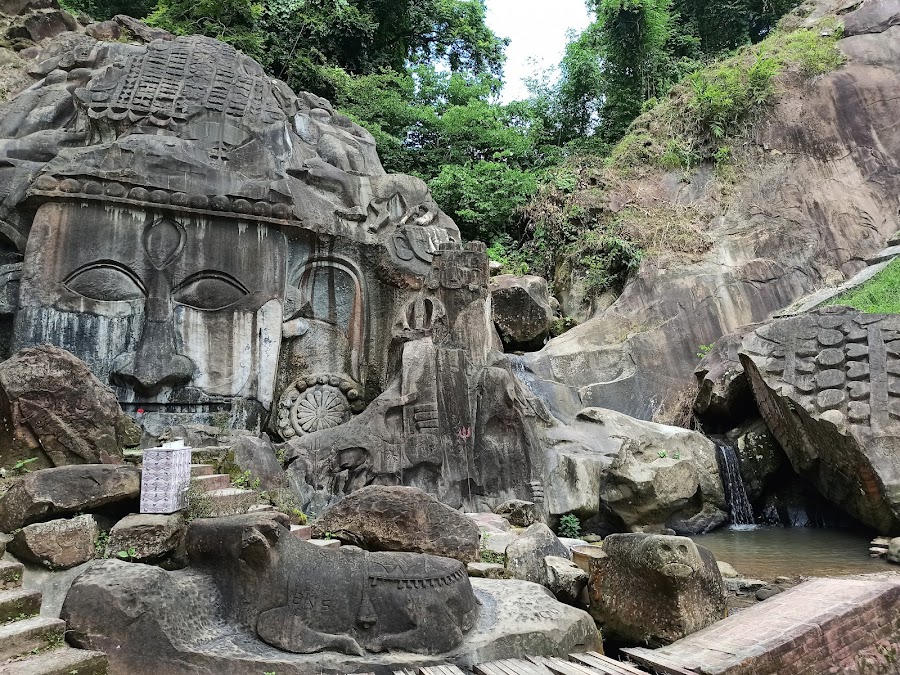
Unakoti Rock Carvings
Dharmanagar, India
- Enjoy the serene natural beauty of the area.
- Explore the ancient rock carvings and murals.
- Learn about the legends and history of Unakoti.
- Photography of the sculptures and natural surroundings.
- Visit nearby Jampui Hills.
Known for:
Description:
Unakoti, meaning 'one less than a crore' in Bengali, is a major tourist attraction in Tripura, India, showcasing magnificent rock carvings, murals, and images. These carvings are primarily dedicated to Lord Shiva, dating back to the 7th-9th centuries. The colossal central Shiva head, known as Unakotiswara Kal Bhairava, is a remarkable sight. The site also features images of deities like Durga, Vishnu, and Ganesha. The serene natural beauty surrounding the carvings adds to the mystical atmosphere. Exploring Unakoti offers a unique blend of art, history, and spirituality, making it a must-visit destination for history buffs and art enthusiasts alike. The site is maintained by the Archaeological Survey of India.
History:
The exact origins and creators of the Unakoti carvings remain shrouded in mystery, with several legends attempting to explain their existence. One popular legend attributes the carvings to Kalu Kumhar, a sculptor who was instructed by Lord Shiva to carve a crore of images in one night. Failing to complete the task, he left one image short, hence the name Unakoti. Another legend suggests that the carvings were created by a group of sculptors as an act of devotion. Historians estimate the carvings to date back to the 7th-9th centuries, belonging to either the Pala dynasty or a local tribal group. The site reflects a blend of Hindu and tribal influences, showcasing a unique artistic style that sets it apart from other rock-cut sculptures in India. Over time, the site has been affected by natural elements.